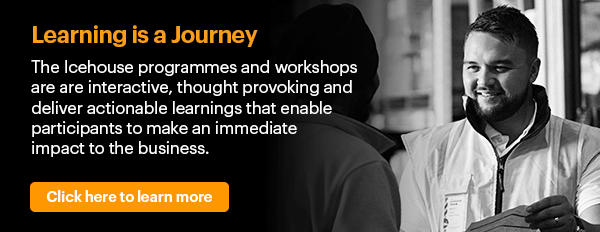I love doing marketing on tiny budgets! And no, I’m not being sarcastic. In the last 5 years I’ve done marketing for three different organisations, have been involved in two start-up projects and talked ‘marketing’ with countless other startups and small businesses as part of my role of Start-up Marketing Executive at The Icehouse. The one constant thing across all of these roles is the lack of big marketing budgets (to the point where there sometimes is none at all). And I love it.
Don’t get me wrong, doing marketing with small budgets is definitely challenging but it’s also exciting and interesting. It gives you the chance to be innovative and resourceful and learn to make the most with what you’ve got – I like to call it Marketing, MacGyver Style.
I want to share some of the things I have learnt over the last few years. I’m not gonna claim that these will be revolutionary new insights (in fact, a lot of it I learnt by reading what other people have written) but they may serve as a good reminder and inspire some new ideas.
In my experience, there are six key rules to doing marketing MacGyver style.

1. Be prepared to work hard
Money saves time, and time saves money. In many ways that is good news. It means you can actually do most marketing activities without having a big budget. The activites may just take longer to implement. The main advantage of having a bigger budget is that you can get things done faster. So if you don’t have a big budget, be prepared to work a bit harder!
2. Focus is key
You don’t have a lot of money and time is probably your most valuable resource, so you need to be very careful about what you spend your time and money on. So focus!
For example, you might have a product that is generally targeted at females aged 18 – 60. While it’s great to have such a big target audience, it’s going to be extremely hard to reach all of them with your limited marketing resources. So focus your efforts. Do your market research to find out who is most likely to be the ‘easiest’ customer for your product. You may decide that career focused females, aged 25-35 with mid to high range income are most likely to be especially interested in product. So aim your marketing efforts at them. That does not mean you should completely forget about all other sectors. Just put them on hold for a while and focus on one (or maybe two – if you’re feeling energetic)
3. Be Creative
This is where it gets interesting and one of the main reasons why I love doing marketing with tiny budget. It gives you the chance to be creative. Without the big budget to run advertising campaigns, massive events, telemarketing, or fancy brand campaigns you have to think outside the box to get noticed.
But being creative goes beyond coming up with innovative campaigns. It’s also about figuring out how to do things smarter.
If you want to do a marketing event, think about trying to get event sponsors/partners involved to help cover costs. If you want to reach out to a new audience, think about who else is targeting the same audience and team up with them to do cross promotions (but obviously we don’t mean getting in bed with a direct competitor). Think about what assets you have and how you can leverage them. For example, if you have an office in a popular area, maybe there is some building/window decoration you can do that grabs attention (if you do something really crazy it might even get you some media coverage like these guys did, or these).
Whatever it is, just don’t let the fact that you don’t have money stop you from doing cool stuff!
4. Experiment – Track – Optimize
Chances are you won’t get it right the first time. So try different things. Start by making some (educated) assumptions about where your customers are and the best way to reach them. It could be via email, direct mail, Facebook, blogs, PR, print publications – and most likely a combination of several of these plus others.
You probably won’t have the time and money to try all at once so pick one or two to start with. Make sure you track activities and their effectiveness. How do you do that? Well, with everything online there are great tools available to show you who opened an email and clicked on which links, how many people click on your Facebook or Google ads, etc. Use Google Analytics or similar to track what’s happening on your website (where people come from, what pages they visit, how long they stage, etc.). If you’re doing off-line activities the best way to figure out what is working is to just ask. Every time you talk to a new customer or prospect make sure you ask how they found out about you. Or maybe pick up the phone and just ask some people in your target audience about your latest campaign (Did they see it? What did they think?).
Once you have the data and feedback, optimize what you’re doing until you figured out what works best. But remember point number 2 – focus. Don’t try to do too much at once.
5. Be Proactive and Persistent (but don’t waste anyone’s time)
You have to be out there and make things happen. Whether you want to get media coverage, find a sponsor for an event, get featured in newsletters, write guest posts for blogs or speak at an industry event if you just wait for it to happen you will probably wait a long time. You need to reach out to people (and you might have to follow up a few times before you get what you want).
However, simply calling someone 10 times will not get you anywhere. It comes back to quality over quantity. Make sure you get your pitch right before you reach out to anyone. Practice with friends and colleague and if you can even a few random people that don’t know you or your business. Make sure it’s absolutely clear what your business is about, what you want to achieve by reaching out to the person and how they can benefit from working with you.
6. Have Fun
It’s gonna be so much easier to work hard, be focused, creative, experimental and proactive when you love what you’re doing – Not to mention it will be so much easier to get other people excited about your products if you really believe in it!
By Lisa Jansen, Start-up Marketing Executive at The Icehouse

